INTRODUCTION
In line with the tremendous progress that has been made in meat-type duck production, digestibility and balance experiments are necessary to fill the dearth of information on the nutrient digestibility of widely used feedstuffs. Digestibility experiments for the evaluation of nutrient disappearance along the gastrointestinal tract align with the need for precise feed formulation to match animals’ requirements for optimal performance; and minimize the excretion of excess nitrogen into the ecosystem (Kong and Adeola, 2010). It is well known that most gut microbes are concentrated in the ceca and are responsible for extensive hindgut fermentation of undigested dietary contents that bypass enzymatic proteolysis at the distal ileum. Therefore, due to the fermentation effect of cecal microbiota on fecal amino acid output, the determination of nutrient disappearance beyond the ileal stage could result in an overestimation of digestibility values (Kadim et al., 2002). As a result, the determination of digestibility prior to the distal ileum is considered to be more accurate and was used in the current study.
It was previously assumed that digestibility coefficients generated from broiler studies could be applicable to duck feed formulation. However, there are several differences in the anatomy, development, and functioning of the duck digestive system when compared to chickens (Lucy and Karthiayini, 2022). Kong and Adeola (2013a) illustrated the influence of these structural differences on the digestibility of feed ingredients and basal endogenous losses of ducks when compared to chickens. Therefore, in line with the scarcity of information on ileal nutrient disappearance in ducks, the current study was conducted to evaluate the basal endogenous losses; apparent and standardized digestibility estimates of crude protein (CP) and amino acids (AA) for corn, soybean meal, and corn dried distiller's grains with solubles.
MATERIALS AND METHODS
Animal Ethics Statement
All experimental procedures were reviewed and approved by the Animal Ethics Committee of Chungnam National University. The experiment was conducted at the Cheongyang Poultry Research Unit.
Birds, Housing, and Management
A total of 200, 1-day-old White Pekin ducklings were obtained from a local hatchery and fed a commercial starter diet (ME: 2,900 kcal/kg; CP: 20%) from d 1 to 15 posthatch. On d 16, 96 ducklings having approximately similar body weights (860 ± 50 g BW) were randomly allocated into 4 dietary treatments in 24 pens. Six replicate cages with 4 ducklings per pen were used. The floor pens (1.7 × 1.3 m3) were supplied with rice husks bedding; and fitted with drinkers and feeders for the ad libitum provision of feed and water, respectively. Lighting was provided throughout the entire experimental period; while the ambient temperature was maintained at 32 ± 2°C in the first week; and then decreased weekly by 2°C until 28 ± 2°C was reached on wk 3.
Dietary Treatments
Table 1 shows the ingredients and chemical compositions of the diets fed for 5 d from d 16 to 21. The test ingredients included corn, soybean meal (SBM), and corn distillers’ dried grains with solubles (DDGS) as the sole source of crude protein and amino acids. Following An and Kong (2022), a nitrogen-free diet (NFD) was subsequently formulated for the estimation of the basal endogenous AA and nitrogen losses. The calculated CP levels were 0, 7.9, and 20% for the NFD, corn, and both the SBM and DDGS diets, respectively (Table 1). Chromic oxide was used as an indigestible marker at 0.50%.
1 NFD, a nitrogen-free diet with an estimated electrolyte balance of 115.0 mEq.
2 Provided per kilogram of diet: vitamin A (trans-retinyl acetate), 12,000 IU; vitamin D3 (cholecalciferol), 2,500 IU; vitamin E (DL-α-Tocopherol acetate), 30 IU; vitamin K3, 3 mg; D-pantothenic acid, 15 mg; nicotinic acid, 40 mg; choline, 400 mg; and vitamin B12, 12 μg; Fe (from iron sulfate), 90 mg; Cu (from copper sulfate), 8.8 mg; Zn (from zinc oxide), 100 mg; Mn (from manganese oxide), 54 mg; I (from potassium iodide), 0.35 mg; Se (from sodium selenite), 0.30 mg.
3 Prepared as 1kg of chromic oxide added to 4g of cornstarch.
Postmortem Procedures, Sample Collection, and Analysis
On d 21, the ducks were asphyxiated using carbon dioxide. The distal part of the ileum was then separated at approximately 1 cm from the vitelline diverticulum towards the ileo-caecal junction. Ileal contents were then gently flushed with distilled water into labeled plastic containers and stored frozen at ‒20°C (Ravindran et al., 2017). Digesta samples were then freeze-dried and grounded for analysis. The collected digesta and feed samples were then analyzed for the CP, chromic oxide, and AA contents in duplicate at the Feed Analysis Center for Chungnam National University. The concentration of chromic oxide was determined following the procedure of Fenton and Fenton (1979). Nitrogen contents were determined using a combustion analyzer with EDTA as the calibration standard (model FP2000, Leco Corp., St. Joseph, MI). The diets and digesta samples were analyzed for AA (AOAC, 2006; method 982.30 E).
Calculations
The basal endogenous losses; apparent and standardized ileal digestibility (AID and SID; %) were calculated as follows;
Mdiet is the marker concentration in the diet whereas Ndigest is the nutrient (AA or N) concentration in ileal digesta whereas Mdigest is the marker concentration in ileal digesta, and Ndiet is the nutrient (AA or N) concentration in the diet.
Statistical Analyses
Collected data were analyzed for statistical significance at P < 0.05 using the general linear model (GLM) procedure of the one-way ANOVA technique. Euthanized birds for digesta sample collection were considered as the experimental unit for ileal digestibility. Tukey's multiple range test was used to separate the means when significant effects were observed.
Table 2
Basal endogenous losses and digestibility values of Pekin ducks fed experimental diets.
1Values are the means of 6 replicates.
2Values are presented in mg/kg of dry matter intake.
3Standard error of the mean.
a–cMeans in a row with different superscripts differ significantly (P < 0.05).
The AID of CP for SBM (89.77%) was significantly higher than that of corn (71.92%) and DDGS (81.42%). The apparent CP digestibility of SBM was 10.26% and 24.82% higher relative to that of DDGS and corn, respectively. Being the reference protein source for poultry diets, it was not surprising that the AID values of SBM were statistically greater for all the measured AA when compared to DDGS and corn; as has been reported (Kong and Adeola, 2010; 2013b). The higher AA and CP values of the SBM relative to DDGS, and corn could account for the improved digestibility values. Considering the most limiting amino acids, the AID of methionine in SBM (90.33%) was approximately 11% higher than that of both corn (81.05%) and DDGS (80.76%). The AID of lysine in SBM was approximately 25.79% and 10.11% higher than that of DDGS and corn, consecutively. Within SBM, arginine and threonine were the highest and lowest digestible AA contents, respectively. Considering corn, methionine, and threonine were the highest and lowest digestible indispensable AA contents, consecutively; whereas for DDGS, leucine and tryptophan were the highest and least digestible contents. Similarities in terms of higher arginine, leucine, and methionine digestibility for SBM, DDGS, and corn, consecutively; and lower threonine digestibility for both SBM and corn, have been reported (Kong and Adeola, 2010, 2013b). The reduced digestibility of threonine could be explained by the relatively higher endogenous secretions (Table 2); and the capacity of peptide bonds involving threonine to resist digestion by proteolytic enzymes as alluded to by Kadim et al. (2002).
The SID of CP for SBM was significantly higher than that of DDGS and corn. The values for SBM were 8.65% and 13.56% higher relative to DDGS and corn, consecutively (Table 2). Likewise, the AA digestibility of SBM was higher for all the investigated AA contents relative to DDGS and corn; the digestibility values for SBM were in excess of 85% for all the amino acids. The highest and lowest digestible indispensable AA contents were methionine (93.58%) and phenylalanine (85.24%) for SBM; methionine (83.98%) and threonine (75.11%) for corn; and valine (85.44%) and lysine (73.94%) for DDGS, respectively. The current results could corroborate the lower endogenous secretion of methionine (Table 2); as well as pointing to the possibility of higher utilization to meet the requirements since methionine is the most limiting amino acid in the commonly fed corn-SBM diets for poultry species. Lower lysine digestibility for DDGS due to the probable influence of the Maillard reaction was also noticed in line with previous reports (Kong and Adeola, 2010). It is plausible that the heating action involved in the conversion of wet distiller grains to dried distiller grains induces a complexing effect with carbohydrate moieties due to the Maillard reaction. As a result, the total lysine content and in turn, the digestibility of lysine in DDGS will be lowered as noted in the current study and elsewhere (An and Kong, 2022).
Conclusively, the current study supplied additional information and extends the existing understanding on the amino acid digestibility of commonly used feedstuffs for duck feed formulation. The difference in dietary protein source affected the extent of amino acid and CP ileal digestibility. Ducks digested AA and CP from soybean meal better than DDGS and corn prior to the distal ileum. The importance of considering the digestible amino acid contents during feed formulation is emphasized. Furthermore, the utilization of digestibility coefficients for individual amino acids alongside the accurate determination of the exact nutrient requirements for ducks could allow for more precise feed formulation in the future.
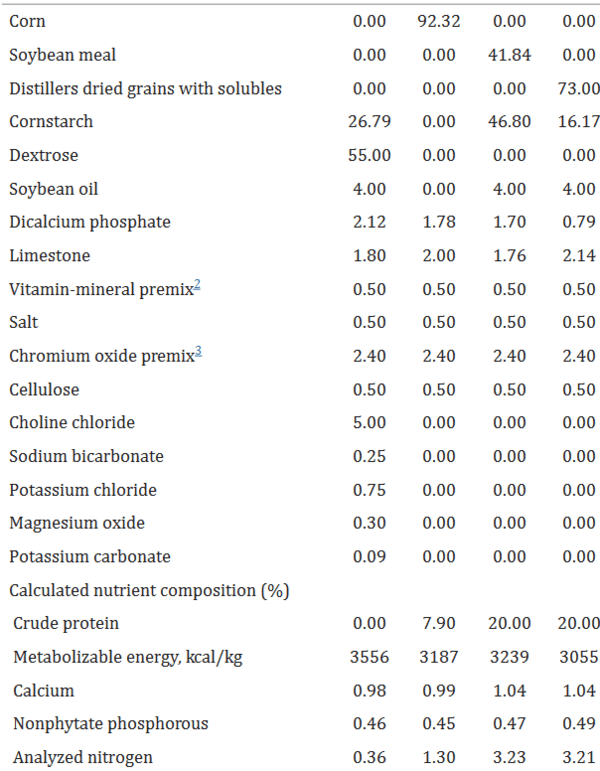
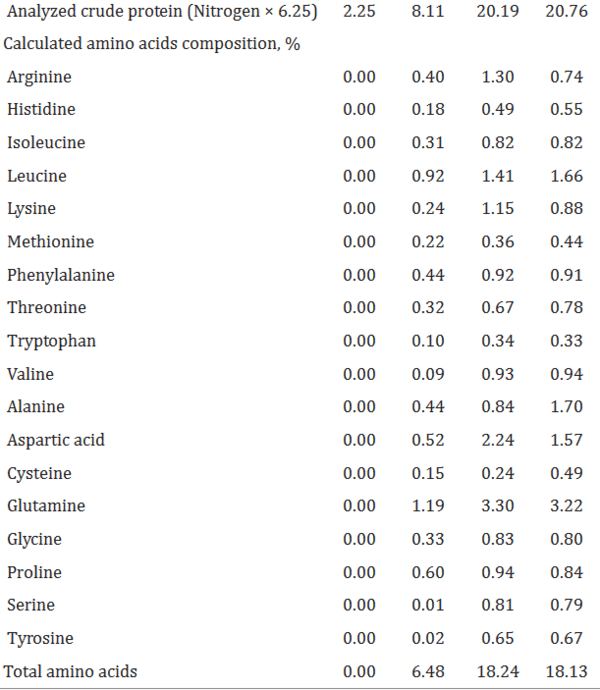
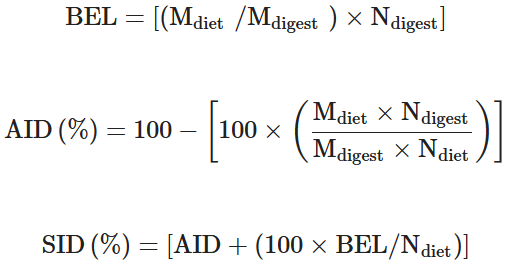
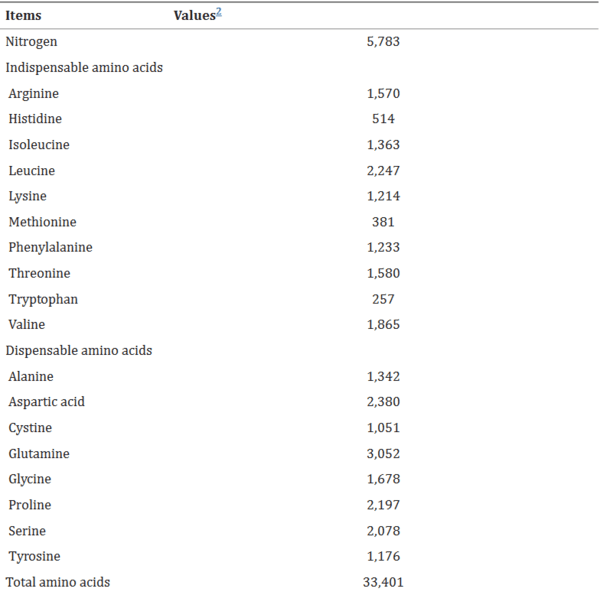
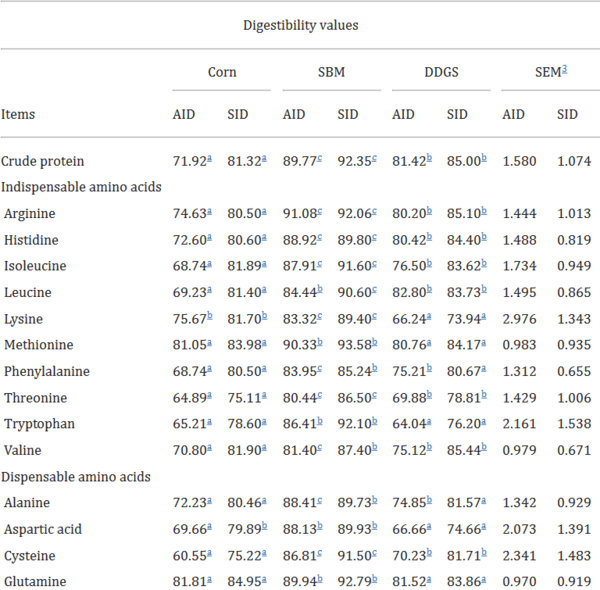












.jpg&w=3840&q=75)